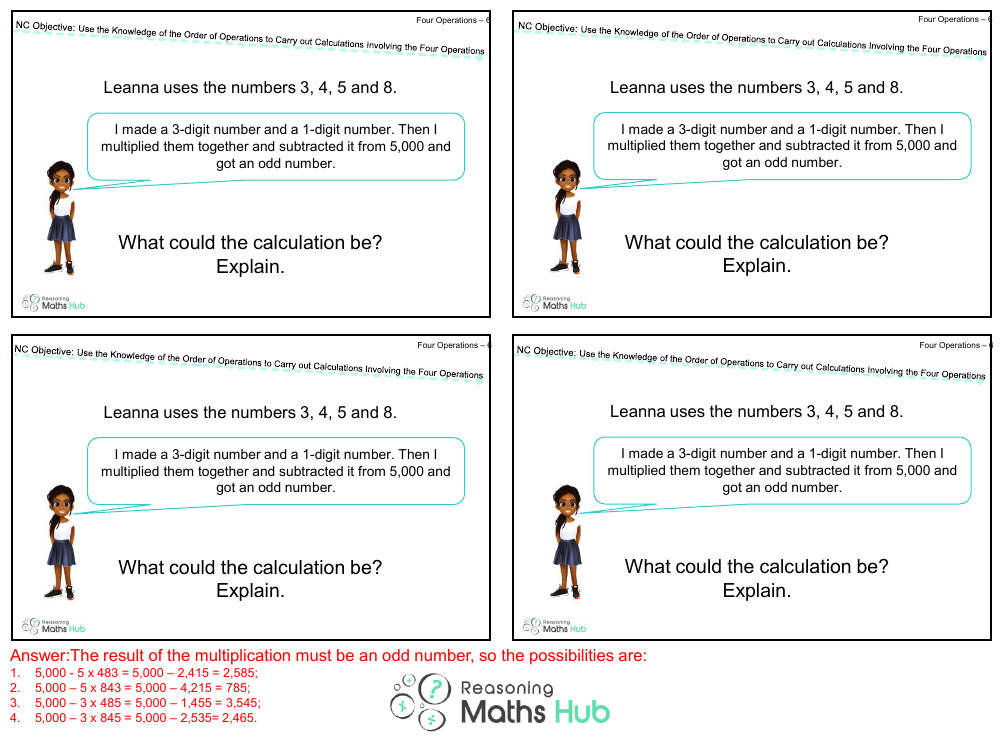Use Their Knowledge of the Order of Operations to Carry Out Calculations Involving the Four Operations 4 - Reasoning

Maths Resource Description
In this reasoning task, Leanna is applying her understanding of the order of operations and the properties of numbers to solve a problem. She has the digits 3, 4, 5, and 8 at her disposal and is required to form a three-digit number and a one-digit number. After multiplying these two numbers, she subtracts the product from 5,000 and the result must be an odd number. To achieve an odd result, the product of the multiplication must itself be odd, because subtracting an odd number from an even number (in this case, 5,000) will yield an odd result.
Considering the digits Leanna has, the one-digit number must be odd, as even numbers multiplied by any other number will result in an even product. Therefore, the one-digit number could be either 3 or 5. When forming the three-digit number, any combination of the remaining digits could be used as long as the multiplication with the chosen one-digit number results in an odd product. Possible calculations that meet these criteria include 5,000 minus (843 multiplied by 5) which equals 5,000 minus 4,215, giving a result of 785, or 5,000 minus (485 multiplied by 3) which equals 5,000 minus 1,455, resulting in 3,545. Both scenarios adhere to the rules of the task and result in an odd number, demonstrating Leanna's application of her numerical knowledge.